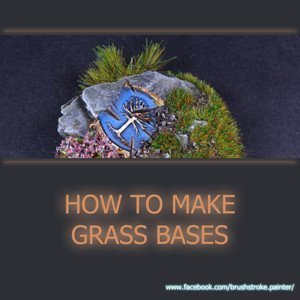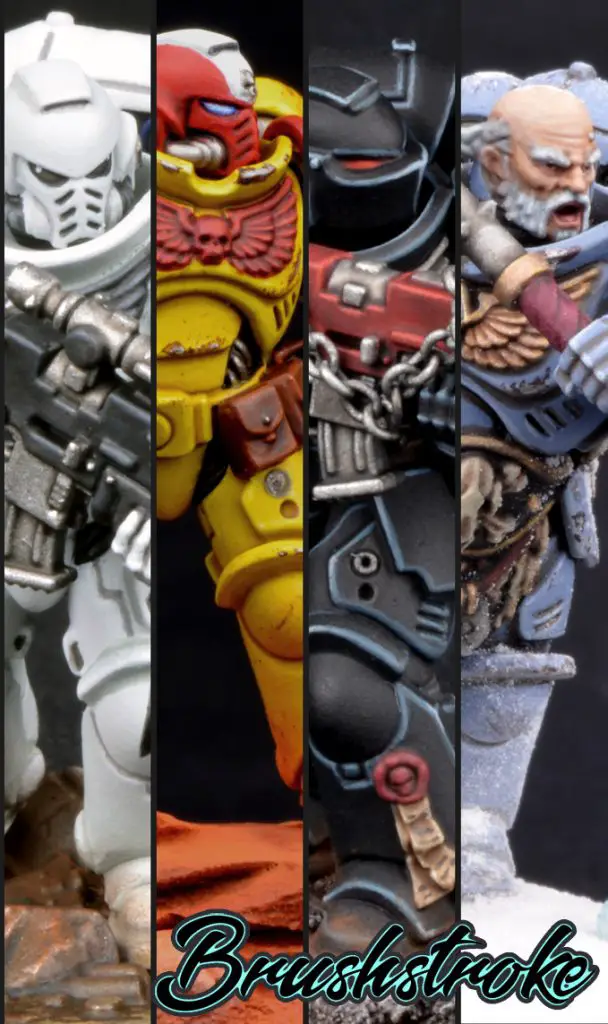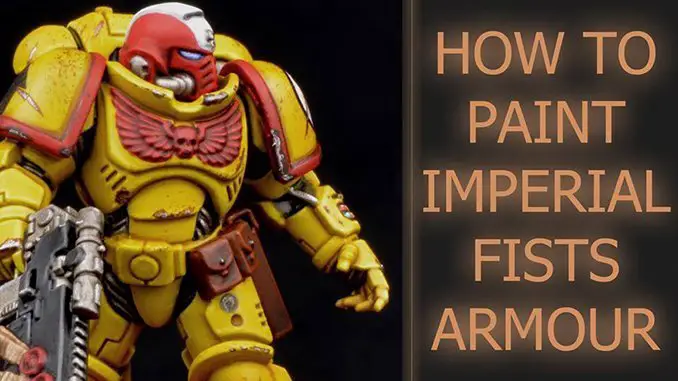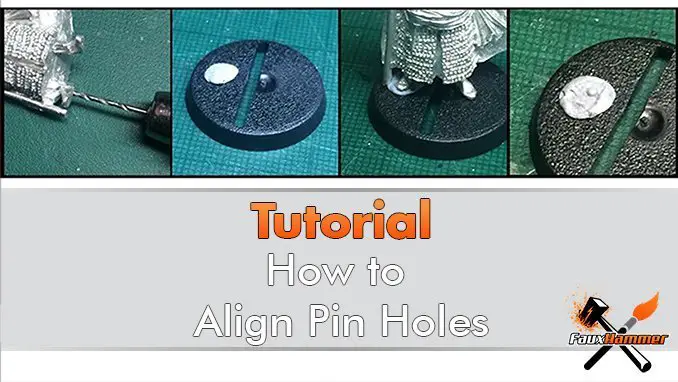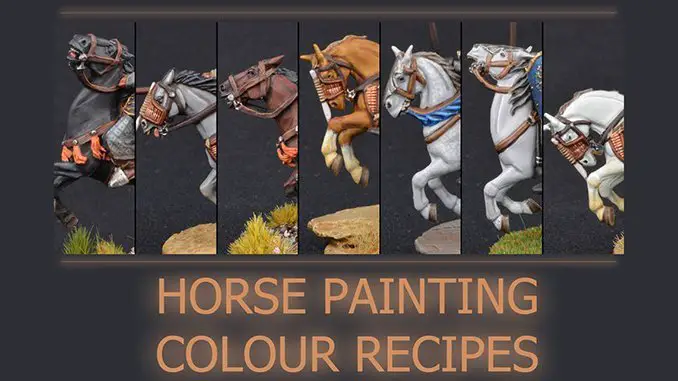How to Make Static Grass Bases for Miniatures & Wargames Models – 2019
Last Updated on September 23, 2019 by FauxHammer
Hey guys Brushstroke back again with another of my Tutorials. This Time we’re looking at the proper way to make static grass bases so you get some deep and lush vegetation.
To See my latest Guides, Find me on Facebook & Instagram
How to Properly Make Static Grass Bases – Paints & Tools
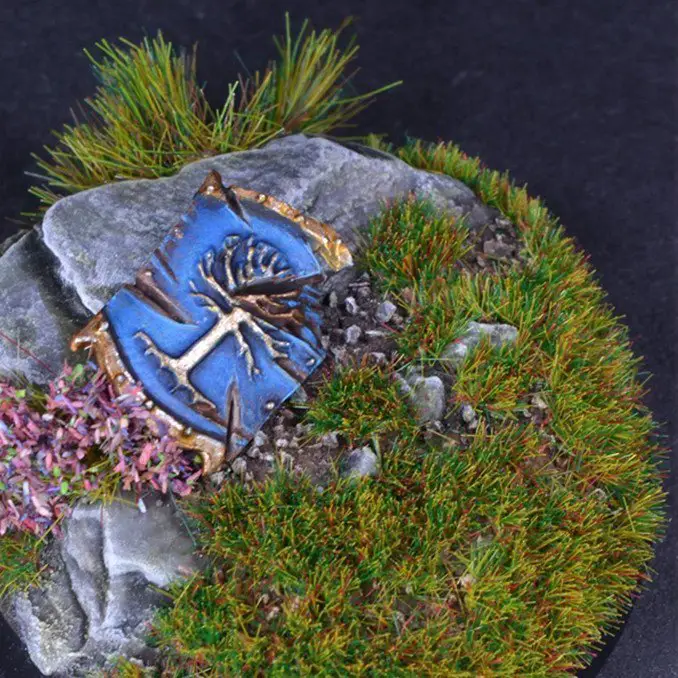
Tools
| Amazon | Click Here |
| eBay – UK | Click Here |
| eBay – US | Click Here |
| eBay – Canada | Click Here |
| eBay – Australia | Click Here |
Paints
- Dawnstone
- Administratum Grey
- Rhinox Hide
- Mournfang Brown
- Ushabti Bone
- NuIn Oil
- Agrax Earthshade
- Athonian Camoshade
How to Properly Make Static Grass Bases – Tutorial
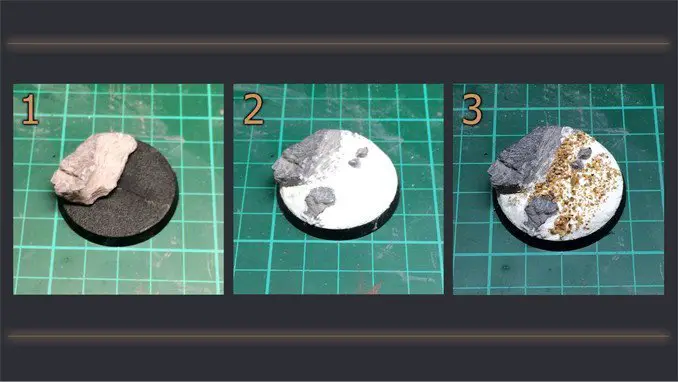
Step 1: Superglue pieces of slate directly to the base
Step 2: Spread filler on to the base, to form a rough texture, and press smaller slate pieces into it.
Step 3: Once the filler is fully set, spread some PVA (white) glue over the areas you want smaller stones and sprinkle sand on to it.
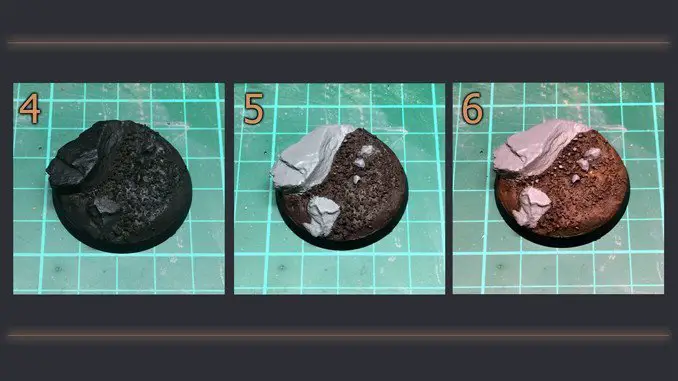
Step 4: Prime the base black.
Step 5: Basecoat the rocks Dawnstone Grey. Basecoat the rest of the base in Rhinox Hide.
Step 6: Dry brush the Rhinox Hide area with Mournfang Brown.
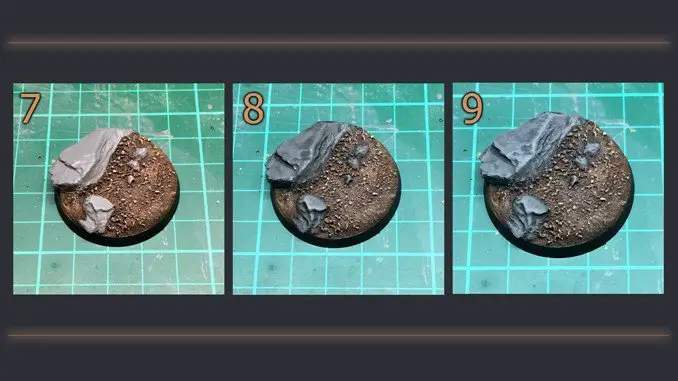
Step 7: Drybrush the Rhinox Hide area again, this time with Ushabti Bone.
Step 8: Shade the Dawnstone rocks with NuIn Oil.
Step 9: Drybrush the Dawnstone rocks with Dawnstone Grey.
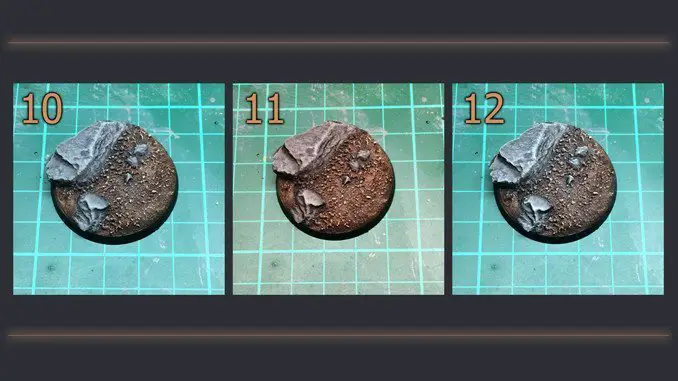
Step 10: Drybrush Dawnstone rocks with Administratum Grey.
Step 12: Shade recesses of Dawnstone rocks with Agrax Earthshade.
Step 13: Lightly drybrush Dawnstone rocks with Dawnstone Grey. Finish by adding small touches of Athonian Camoshade to recesses of the rocks to simulate moss and vegetation build-up. Keep it subtle, but this step really helps to make the rocks appear more realistic.
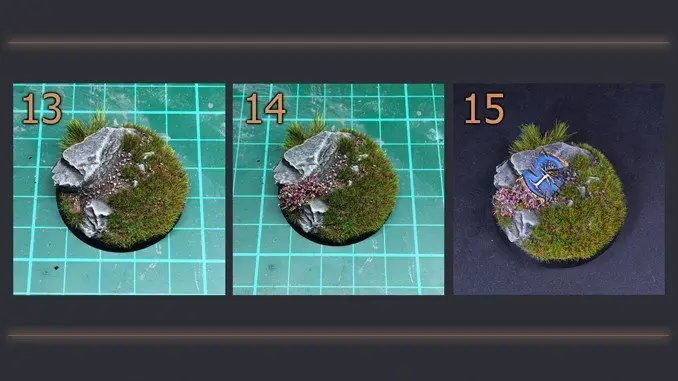
Step 13: OK, now the fun bit… adding grass and tufts. By painting the whole of the base, it now gives total freedom to how much grass you want to add at this stage. For a wasteland look, you could just add a couple of long brown tufts, for a more lush feel you’ll need to add static grass. As the name suggests, static grass is actually intended to be applied using a static electric charge and it is the static charge which gives by far the best results. For this you are going to need to use a static applicator, there are different types you can buy (you can even make your own). I’ll provide more details at the end of this tutorial. Spread PVA (white) glue over the areas you want short grass to be and apply 3mm static grass using your applicator.
Step 14: Once dry, add longer tufts (5mm), flowers and shrubs. These can be bought or homemade In this case, the heather tuft is made from 5mm static grass and coloured sawdust.
Step 15: With the base now complete, all that remains to do is add your mini, or in this case a broken shield to act as an objective marker.
Static Grass Applicators
This is the secret to achieving perfect grass for your minis.
As mentioned previously, there are actually lots of different types of applicator.
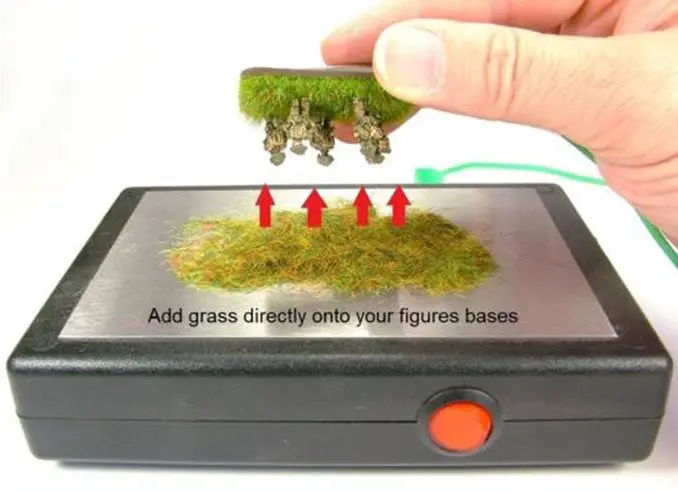
| Amazon | Click Here |
| eBay – UK | Click Here |
| eBay – US | Click Here |
| eBay – Canada | Click Here |
| eBay – Australia | Click Here |
I’ve found the best results were achieved by using a static plate box (like the one shown in the pic).
This exact product is frequently in and out of stock. But you’re basically looking for abox with a metal plate on top.
The other common version is a hopper (the ones in the shape of a flashlight) which are normally used for large dioramas or flocking Car Dashboards.
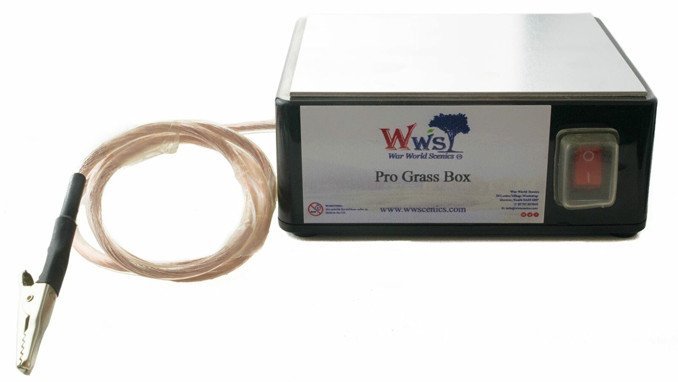
You can buy them on eBay and Amazon
They work by creating an electrostatic charge to attract the nylon flock fibres onto a glued surface, the flock fibres jump towards that object and sit in the glue sanding on end to produce a uniform carpet layer.
Here’s an example of them in Use from FauxHammer.
Static Grass Base Complete
Thank You, I hope you find this guide useful.

If you do have any questions or suggestions on how to improve it for others, then please do let me know.
More Tutorials From Brushstroke
Got any questions? Want to see more tutorials like this, or what I’m working on next? Follow me on Instagram by clicking any of the images in this post.
I’m now on YouTube, Subscribe to my channel and see my video guides by clicking here.
See this full tutorial and more, directly on my Instagram & Facebook pages. Don’t forget to LIKE and FOLLOW for more tips and guides.
What did you think of this Tutorial? please let us know in the comments.
If you like what we’re doing here you could really help encourage more content with a share on any social media platform.
Click the share links at the bottom of this screen (or on the left for computers and tablets)
Want to keep updated with the blog? You can subscribe in the sidebar for RSS or by email below
(Sidebar is below the article on Mobile Devices)
